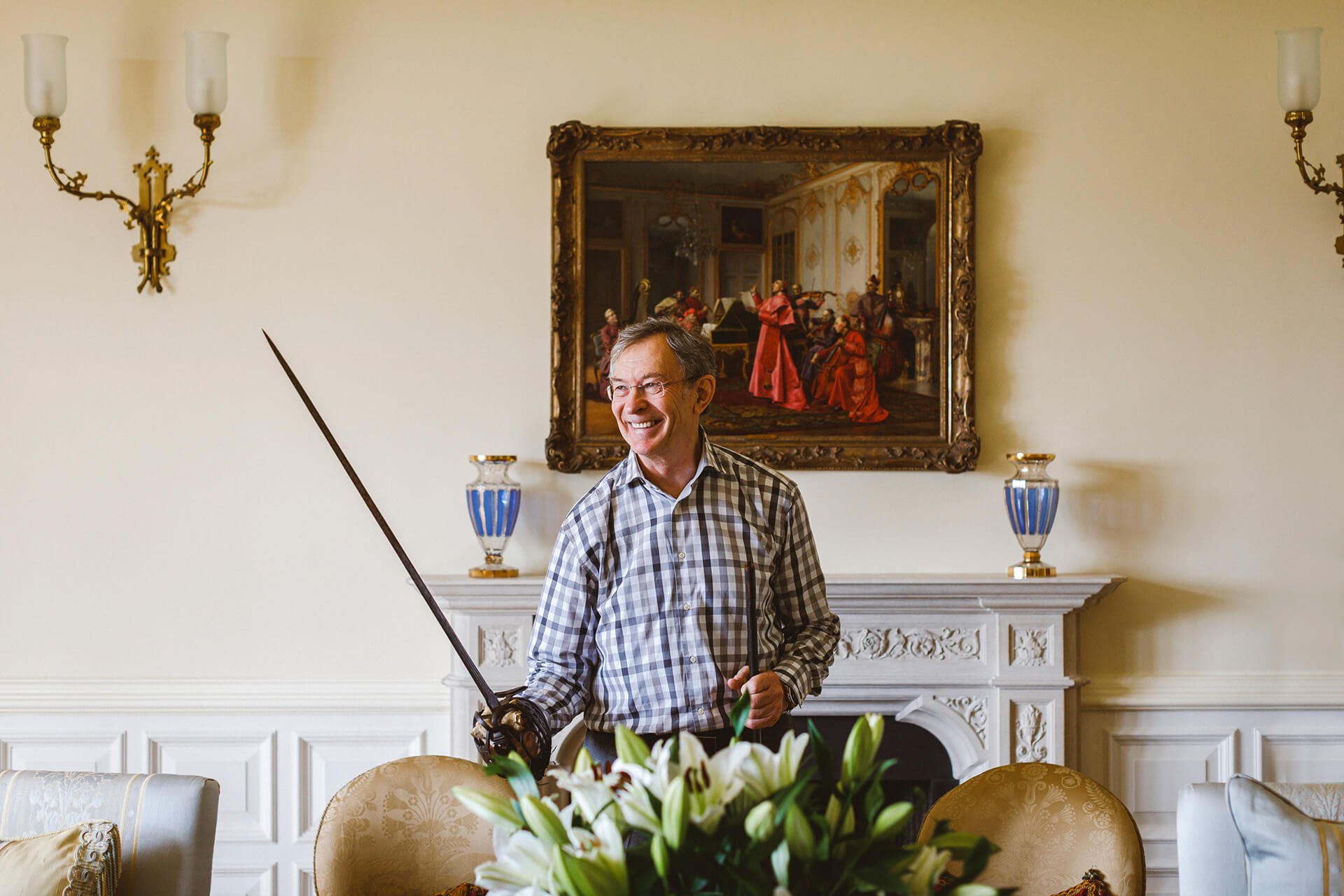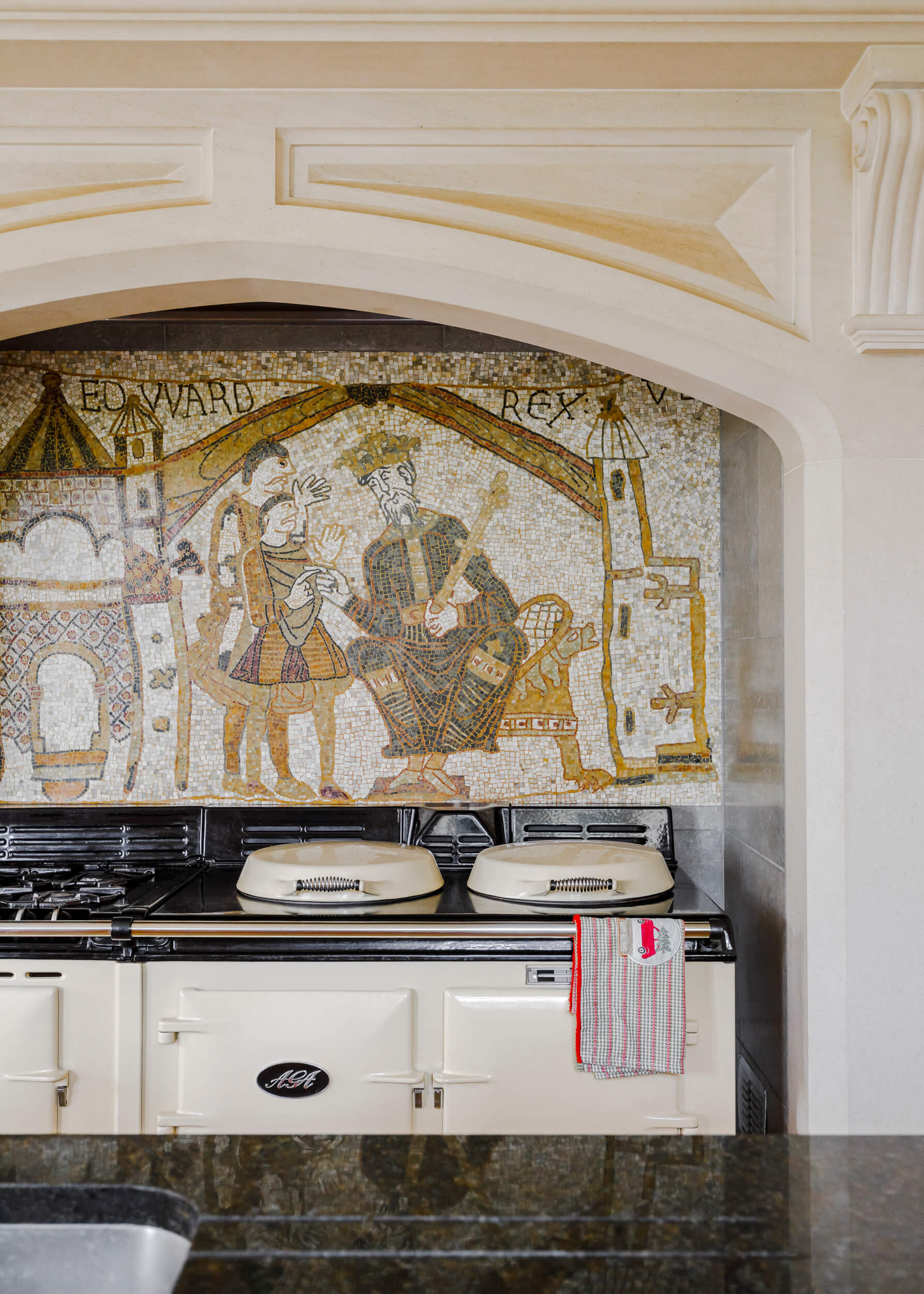Living history: Dinton Hall
Following a 10-year, £10m future-proofing programme, this immaculate 15th-century manor in Buckinghamshire offers prospective buyers a once-in-a-lifetime opportunity

Richard Vanbergen isn’t a man who does things by halves. His career proves as much. Vanbergen was the man who, having owned a successful chain of supermarkets, went on to create the biggest part-baked bread business in the world, producing over 2,000 tonnes of frozen bread per week in the 1990s, exporting to many countries around the globe.
Now he’s chairman of his son’s business, importing British education into China, having opened three secondary schools and a primary school in Hong Kong that offer affluent Chinese and ex-pat families access to first-rate British schooling – the largest school has space for over 2,000 students.
His home, Dinton Hall in Buckinghamshire, an extraordinary 15th to 17th-century manor surrounded by 46 acres of rolling fields and peaceful gardens, is equally impressive. Vanbergen bought the 20,000 sq ft, Grade II* listed property in 1999, “because my wife told me to”. The house was in danger of falling down.
Dry rot had ravaged the hall and its aged wooden structure supporting the roof was about to collapse. Over the course of 10 years, and at a cost of £10m, he not only restored the house, but modernised it to the nth degree – so much so that Dinton Hall is now probably the single most bulletproof historic stately home in the UK.
“Anything that could possibly go wrong has been replaced,” he says. “We took half the interior walls down, the roof off and all the windows went too. As we rebuilt the house, we built in air bricks and an air circulation system.
Now air can flow through the house so that no part of it can ever physically reach 70 degrees relative humidity, which means the dry rot that killed the house can never return.” Vanbergen has done the same in the house’s cellar, installing a clever airflow system, which, together with an air dam and a 12-feet deep French drain keeps the whole house damp-proof.
Of course, this is only a fraction of the work that’s taken place. Quite apart from replacing and completely reconditioning much of the structure itself, the house has not one, but two, impressive plant rooms, kitted out with state-of-the-art, energy efficient equipment, including a magnetic filter that removes iron particles from water running through the house’s radiators to prevent contamination within the system.
Steel beams and girders now run invisibly throughout the hall to support it, concealed within the period wooden structure. “Beams within the walls are stainless steel,” Vanbergen adds. “This house will stand for another 500 years, at least.”
For all this meticulous future-proofing, Dinton Hall retains its historic charm. The earliest record of a manor on the site is in the 11th century Domesday Book, when newly-crowned William the Conquerer gifted the estate to his brother, Bishop Odo of Bayeux, who fought alongside him at the Battle of Hastings and most likely commissioned the Bayeux Tapestry. There’s a larger than life-sized statue of Odo at the centre of the ornamental pond in the house’s courtyard, and Vanbergen’s kitchen features an immaculate replica mosaic of the tapestry’s key scenes around its walls.
The existing house, built from 1492 by Archbishop William Warham, contains other remarkable curiosities too. In the 17th century, Dinton Hall was the home of Simon Mayne MP, a Parliamentarian who fought alongside Oliver Cromwell during the English Civil War.
At the Battle of Edge Hill in 1642, Cromwell gifted Mayne with his own combat-worn sword as a mark of distinction. Today, the sword – in remarkable condition – sits on the mantelpiece in the ground floor library, and will stay with the house when it’s sold. So too will a bizarre patched leather shoe, supposedly owned by John Bigg, a clerk at the Hall who allegedly swung the executioner’s axe that beheaded Charles I.


Beyond these remarkable objects, Vanbergen’s trademark ambition makes itself known in the state-of-the-art orangery, which features a 1,000 sq ft Cosmati marble floor of stunning complexity, composed of several now impossible-to-source marbles, designed by Vanbergen himself and laid by possibly the best craftsman in this field. Other standout features include an in-built aquarium.
Next to the orangery is the indoor swimming pool, above which sits an exact, true-to-size replica of the Alexander Mosaic, which depicts Alexander the Great fighting the Persian king, Darius, at the Battle of Issus in 333 BC. It’s made of more than three million pieces, and took 100 artists 16 months to create. “You’ll never be able to make something like that again,” Vanbergen says. “The kind of highly skilled artists who made that for me simply aren’t around any more.” Given the original is missing a third of its whole, he adds that this replica is probably the finest mosaic of its size in the world.
Having invested quite so much time and money in creating the historic house of his dreams, you might wonder why Vanbergen has decided to sell Dinton Hall. “It’s time for me to downsize,” he explains. “My wife has passed away, as have my parents, and my children have all gone their own way too.” He says the house would be suitable for many types of buyers – a businessman for a home or office with easy access to London, Oxford and Heathrow Airport; a family wanting to entertain in style, or just someone who appreciates the finer things in life. He notes that his pair of “absolutely indispensable” housekeepers will happily stay on for the new owner.
Transforming Dinton Hall is the kind of project that would have broken a lesser mortal. Its sheer scale alone is breathtaking. Spread over three floors, the house features wood-panelled rooms, five reception rooms, a breakfast room, nine bedrooms (including four suites), seven bathrooms, a games room and gym, staff flat and four attic rooms. And don’t forget the pool, sauna and orangery, the six-car garage, or the gardens with their 13th century dovecote, treehouse, orchard and two tranquil gin-clear lakes.
What, then, inspired him to take on the project? “I’m plumb crazy,” he quips. Perhaps ‘brilliant’ would be a better word. Vanbergen has achieved something unique in Dinton Hall, the likes of which you’re unlikely to ever find again, unless you’d care to spend 10 years and the aforementioned £10m transforming a manor house like this yourself. To buy Dinton Hall is a once-in-a-lifetime opportunity; a chance to live in your own piece of future-proofed history.
Dinton Hall has a guide price of £12,000,000.